SEEDS partners with the vulnerable communities to build their resilience to disasters and climate change impacts. We use innovative approaches and technologies that work for these communities.
Asia-Pacific region overall is the most disaster-prone and climate vulnerable continent in the world. India, in particular, is highly vulnerable to a range of natural hazards such as earthquakes, landslides; weather-related disasters – floods, cyclones, droughts and forest fires, which have now – exacerbated due to impacts of climate change. Asian countries are also facing a range of slow-onset climate impacts, including sea-level rise, ocean acidification, loss of biodiversity and increasing pace of desertification.
Unplanned development and lack of disaster preparedness is amplifying the magnitude of devastation putting the most vulnerable communities at even greater risk. While weather-related emergencies are growing more intense, frequent and unpredictable, secondary impacts on health, safety and overall well-being are increasing. Loss of lives, assets and livelihoods is severe enough to force affected people to leave their natives and migrate in distress. Forced migration is now becoming a norm in such disaster-prone regions across the country.
SEEDS works with both disaster-affected and at-risk communities. We do this in a long-term and interconnected manner – in peacetime, before, during and after a disaster event. Our attention is on the most vulnerable and marginalised families within these areas.
To build resilience of affected communities, we focus on safe housing, schools & community infrastructure; water & sanitation; environment; and health – all with a sustainable and ecosystem-based approach.
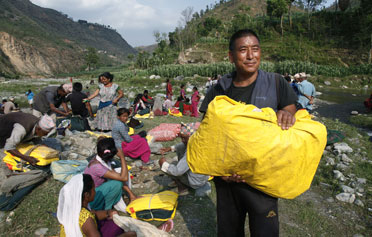
Emergency Response and Relief
When disasters strike, affected communities require immediate assistance. SEEDS tailors every response to the need on the ground. We help with emergency tents, early recovery housing and kits of essential items. In cases where schools are damaged, temporary learning centres are established to help continue education. Major water sources are cleaned and repaired. SEEDS also sets up roving medical camps to provide remote populations with immediate health services.
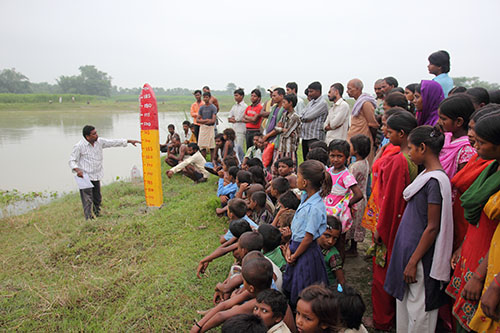
Disaster Risk and Resilience
The reconstruction process is not just to restore what was lost, but to create a better and safer life than before. SEEDS partners with survivors to rebuild their homes, schools and community infrastructure; and addresses ecosystems around these.
The quality of these buildings is upgraded through relevant disaster reduction techniques and making them climate proof for the future. Sustainability lies at the heart of our design process using cultural norms, environmentally friendly features and local material. Wherever possible, buffer plantations and nature-based solutions are incorporated into the larger programme.
We strive to leave behind skillsets, not just infrastructure. Our programmes incorporate training of local construction workers on retrofitting and safe construction practices. School safety or community preparedness trainings are added. Awareness campaigns on safe water, sanitation and hygiene practices are run.
SEEDS also works closely with local governments on larger reconstruction planning processes. Together, these varied strands embody the spirit of building back better.
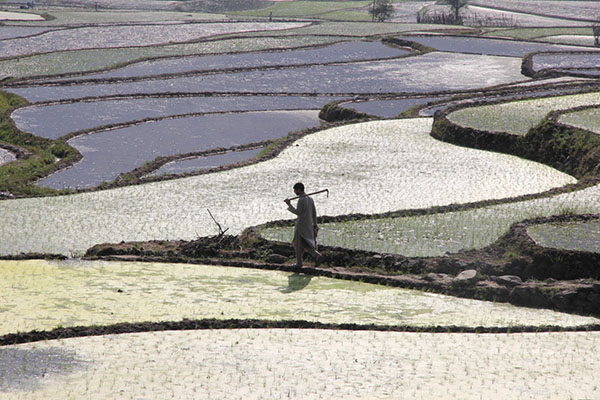
Sustainable Environment and Climate
Disaster risk is not always seen or acknowledged. India has communities where disasters are an annual occurrence and others who have no collective memory of the last emergency. SEEDS works with both sets of communities to be better prepared for future disasters, including range of climate impacts, and reduce overall risk.
It starts with assessments, planning and training. Schools play a pivotal role, working with them on holistic school safety plans. We also support governments and communities on their contingency and early warning plans.
Reducing risk also means acknowledging that a ‘disaster’ cannot be looked at in isolation. People face multi-faceted problems in their neighbourhood. Each silent risk (e.g. air pollution) or stresses such as access to clean water adds to the vulnerability. We help communities find ways to solve or better withstand their daily risks.
Finally, dealing with climate emergencies requires changes in how we interact with nature. We work on practical environmental and adaptation initiatives. From nature-based solutions to managing financial risk; from mitigation strategies to adapting livelihoods, building resilience and supporting those who face displacement. Each of these is tailored to the area’s ecology, needs and strengths.
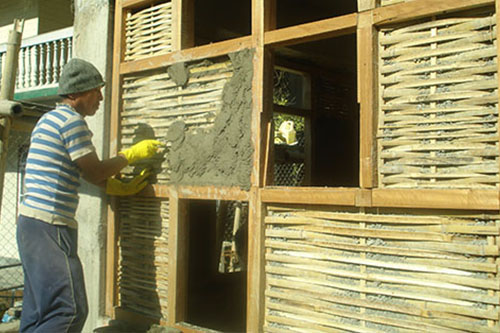
Resilience Partnership
We use science to leave no one behind Disaster innovation refers to the development and implementation of creative, affordable and sustainable solutions and technologies to mitigate the impact of disasters, enhance response & recovery efforts and build resilience amongst vulnerable communities. It involves leveraging existing knowledge, resources and emerging technologies to address the challenges posed by disasters and climate-induced risks.
Some key aspects and examples of disaster innovation are:
Early Warning Systems that can detect and predict disasters such as earthquakes, hurricanes, floods, cyclones and tsunamis. These systems help to alert communities in advance, allowing for timely evacuation and preparation.
Remote Sensing and GIS: Remote sensing technologies, including satellite imagery and aerial drones, provide critical data for disaster management. Geographic Information Systems (GIS) help in mapping and analysing disaster-prone areas, aiding in effective preparedness, response and recovery strategies. SEEDS’ Sunny Lives model is one such example that leverages satellite imagery to perform risk assessment and micro forecasting of disasters in order to disseminate targeted warnings. Besides saving lives, this technology enables vulnerable communities to thrive despite climate and disaster risks.
Communication and Information Management: During disasters, communication is vital for coordinating response efforts and disseminating timely information to affected communities. Innovations such as mobile applications, social media platforms, and emergency communication systems have improved communication channels, facilitating real-time updates and enabling individuals to seek help or report emergencies.
There are many other innovation examples that have the potential to save lives and mitigates the risk of disasters.
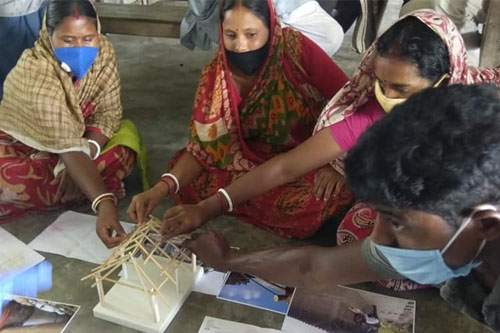
Tech for Resilience
We use science to leave no one behind Disaster innovation refers to the development and implementation of creative, affordable and sustainable solutions and technologies to mitigate the impact of disasters, enhance response & recovery efforts and build resilience amongst vulnerable communities. It involves leveraging existing knowledge, resources and emerging technologies to address the challenges posed by disasters and climate-induced risks.
We believe in participatory approach, contextual relevance, holistic skill development, knowledge sharing & peer learning, practical & experiential learning, sustainability & ownership and multi-stakeholder collaboration that can help enhances self-reliance, fosters resilience and promotes sustainable development from within the community.
